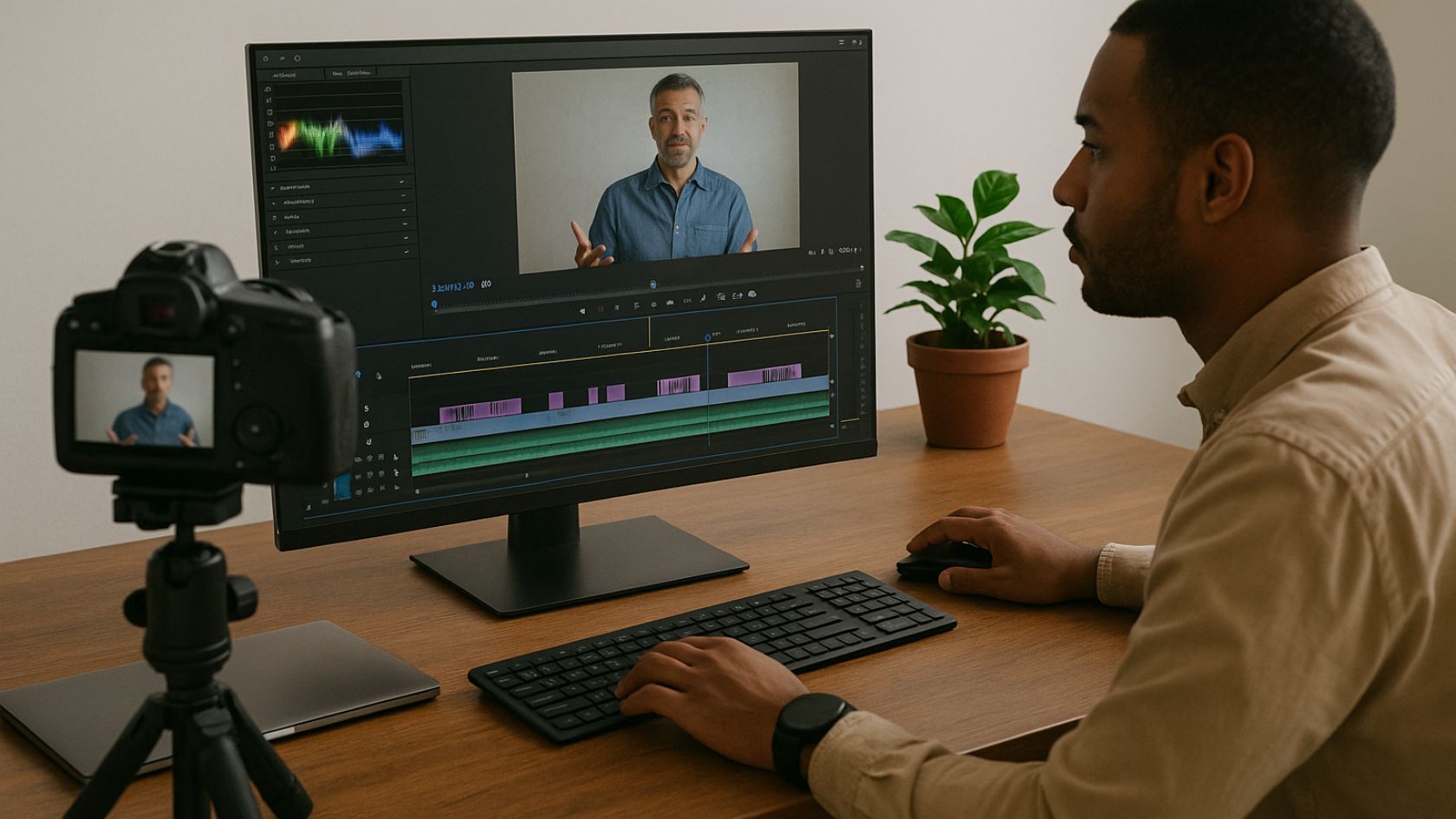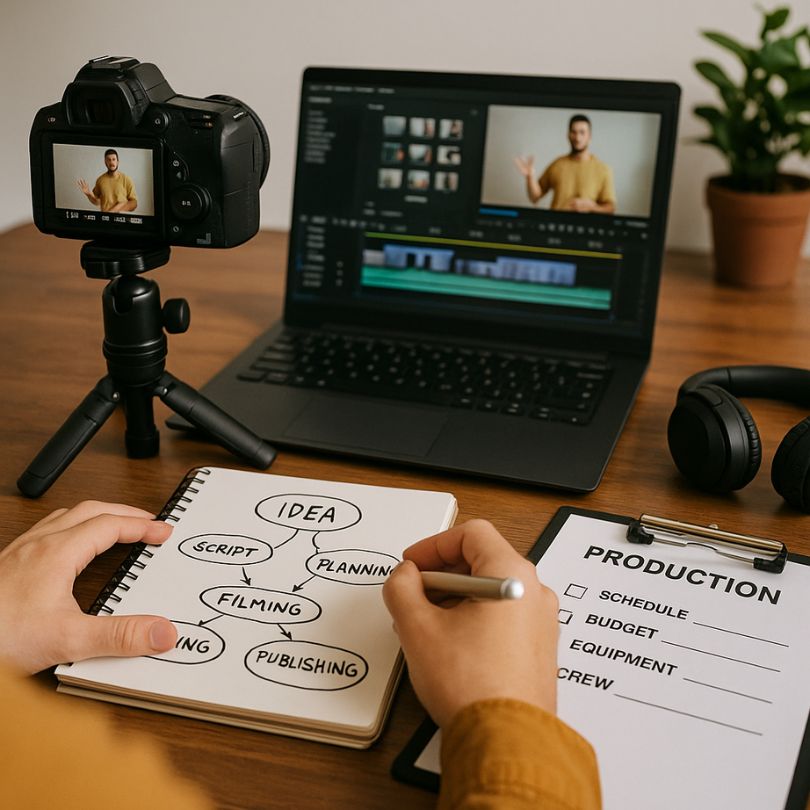
Best Practices for Video Creation: A Complete Step-by-Step Guide

Best practices for video creation begin with a clear plan and end with data-driven iteration, ensuring every second of footage serves a purpose. Whether you’re a solo creator, a marketer inside a growing team, or a brand leader scaling content, this guide walks through the full lifecycle—from research and scripting to production, editing, optimization, and measurement. By following the practical tips below, you’ll reduce rework, raise production value, and consistently ship videos that inform, persuade, and convert.
Before you ever press record, orient your video toward a specific viewer and outcome. Study your audience’s questions, pains, and motivations, then align your concept to meet them where they are. It helps to browse established video content creation tips for inspiration, but always map ideas back to your brand promise and goals. Clarity at this stage gives you a north star for script decisions, shot selection, and editing choices later on.
Define one primary job for the video—educate, demonstrate, entertain, or convert—and write it down as a success statement. Keep the focus keyword in mind as you outline; it guides your title, description, captions, and even on-screen copy. When you draft talking points, prioritize the hook and value delivery: what gets viewers to stop scrolling, and what keeps them watching?
Think beyond the single upload. Strong videos also support list growth, nurturing, and sales enablement across channels. Add on-screen calls-to-action and descriptions that point to a next step—newsletter signup, free resource, or product trial—so your content compounds over time to grow subscribers and revenue. With a holistic plan, every asset you create has multiple uses across your marketing flywheel.
1) Pre-Production: Set Purpose, Audience, and Outcomes
Pre-production is where you save the most time. It’s tempting to jump straight into filming, but the best returns come from tight goals, audience clarity, and an executable brief. Invest here so filming and editing become faster and more predictable.
- Clarify the goal: What action should viewers take after watching? Define one primary conversion.
- Identify the audience: Document pain points, desired outcomes, and vocabulary your viewers already use.
- Choose the format: Tutorial, demo, testimonial, explainer, webinar cutdown, or short social edit.
- Decide the primary platform: YouTube, TikTok, LinkedIn, website, or email—aspect ratio and pacing will vary.
- Create a brief: Title draft, one-sentence premise, key beats, required visuals, and a specific CTA.
- Set constraints: Length target, deadline, budget, and roles to avoid scope creep and delay.
2) Script and Storyboard: Design for Attention
Your script is a promise to your audience: open with the hook, deliver the value, and ask for a next step. Write for the ear, not the eye—short sentences, concrete nouns, and verbs that move. Add a storyboard or shot list to match visuals to talking points and reduce decision fatigue on set.
- Hook: Lead with a problem, surprising stat, or quick outcome to earn the first 5–10 seconds.
- Value delivery: Teach the “how” with simple steps, not just the “what.”
- Proof: Use specific examples, mini case studies, or quick demos for credibility.
- CTA: Tell viewers exactly what to do next—download, subscribe, comment, or visit a page.
- Pacing: Plan beats so there’s a visual change or key point about every 3–7 seconds in short-form content.
3) Production Fundamentals: Picture, Sound, and Presence
Production quality doesn’t require a cinema camera. It requires control: stable frames, clear audio, and flattering light. A phone with a decent mic and window light can outperform an expensive rig with poor technique. Master these fundamentals before you add complexity.
Audio First
- Use a lapel or shotgun mic close to the mouth; bad audio causes quick drop-offs.
- Record in a quiet room; soften echo with rugs, curtains, or blankets off-camera.
- Monitor levels to avoid clipping; aim around −12 dB peaks.
Light for Clarity
- Face your key light (window or softbox) at ~45°, then fill shadows lightly.
- Avoid overhead lighting that creates harsh shadows; balance color temperature.
- Separate subject from background with depth, accent light, or contrasty backdrop.
Steady, Intentional Framing
- Stabilize with a tripod; compose using rule of thirds for eye-level shots.
- Use B-roll liberally to cover cuts and add context; capture wides, mediums, and close-ups.
- Lock exposure/white balance to prevent flicker and color shifts between takes.
4) Editing Workflow: Clarity, Pacing, and Accessibility
Editing turns raw footage into a narrative. Start by organizing assets and building a clean rough cut. Then iterate on pacing, add supporting media, and finish with color, audio polish, and accessibility layers so more people can engage without sound.
- Structure first: Assemble the hook → problem → steps → result → CTA. Remove anything that doesn’t serve the core promise.
- Cut tighter than you think: Trim pauses and tangents; add pattern interrupts for retention.
- On-screen text: Use lower-thirds and section headers sparingly to reinforce key ideas.
- Captions: Add accurate subtitles; 80%+ of social views are muted.
- Sound design: Balance dialogue, music, and effects; duck music under voice by 12–18 dB.
- Color consistency: Match exposures and white balance; apply a subtle grade for cohesion.
5) Optimization for Platform and Search
Optimization is where your focus keyword goes to work. Align your title, description, tags, and on-screen copy with how your audience searches. Tailor aspect ratio, length, and thumbnails to each platform so the same core story travels farther with minimal rework.
- Titles: Front-load the benefit and include the focus keyword naturally.
- Descriptions: Summarize key steps, add timestamps, resources, and your CTA link.
- Thumbnails: High contrast, 3–5 words max, and a face with eye contact when relevant.
- Formats: 16:9 for YouTube/website, 1:1 or 4:5 for feeds, 9:16 for Shorts/Reels/TikTok.
- Metadata: Use consistent tags, end screens, cards, and playlists for session growth.
6) Distribution and Promotion: Multiply Each Asset
Think in derivatives. From one core recording, produce short teasers, GIFs, audiograms, quote images, and carousel summaries. Embed the video in related blog posts, use it in sales enablement, and include it in onboarding and support flows to reduce friction and ticket volume.
- Cross-post natively where possible; algorithms reward uploads over external links.
- Collaborate with partners and creators for co-distribution and audience borrowing.
- Pair each post with a question to spark comments; engagement fuels discovery.
- Use UTM parameters to attribute traffic, signups, and revenue back to each video.
- Refresh winners with new hooks, thumbnails, and first 10 seconds to extend lifespan.
7) Measure What Matters and Iterate
Success isn’t just views; it’s qualified attention and outcomes. Track retention, clicks, and conversions, then update scripts, hooks, and packaging based on the data. Treat every upload like an experiment that teaches you how to improve the next one.
- Retention curves: Identify drop-off points; move or rewrite those moments in your next edit.
- Click-through rate (CTR): Test thumbnails and titles in pairs to isolate impact.
- Traffic quality: Measure session duration, pages per session, and signup rates from video viewers.
- Conversion paths: Connect video to email, CRM, and product analytics to see downstream effects.
- Cadence: Review weekly; ship small improvements rather than waiting for a perfect overhaul.
8) Common Pitfalls to Avoid
- Vague goals: A video that tries to do everything rarely does anything well.
- No hook: If the first 5–10 seconds don’t promise value, viewers scroll past.
- Messy audio: People forgive grainy footage before they forgive noisy, echoey sound.
- Overlong cuts: Trim relentlessly; remove throat-clearing, filler, and repetition.
- Platform mismatch: Square pegs in vertical holes underperform; format for context.
- No CTA: Without a next step, even great videos fail to compound results.
9) Quick Production Checklist
- Goal, audience, single CTA defined
- Script with hook, value, proof, and ask
- Shot list and B-roll plan
- Mic checked, room treated, levels set
- Lighting positioned, white balance locked
- Tripod/stabilization confirmed
- Take markers for easier edits
- Captions, lower-thirds, and branding
- Thumbnail, title, description optimized
- Distribution plan and UTMs created
Conclusion
Best practices for video creation aren’t about expensive gear—they’re about clarity, consistency, and iteration. Plan tightly around one promise, design for attention with your script and first 10 seconds, capture clean audio and steady frames, then edit for clarity and accessibility. Package videos for each platform, distribute derivatives widely, and measure what matters so each release outperforms the last. As you scale, consider tools and research that reveal what’s resonating in your niche—especially for ad-supported campaigns where in-stream ad intelligence can shorten the path from idea to impact. Keep shipping, keep learning, and your library will compound into brand momentum.